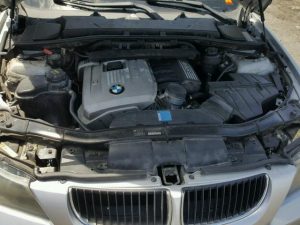It happens to a lot of us. You absolutely love your current car. It gets you to work and back, and is great fun to drive on the odd road trip. It has been reliable, despite being old enough to be out of warranty. But one day, it has a catastrophic failure or sustains a fair amount of damage. Your insurance doesn’t cover the damage or it has a high deductible. Whether it’s a trashed interior, the engine seizing up, or torn bodywork on the front end, you are looking at a sizable bill for parts and labor. If you want to keep the car, here is an affordable solution: buy a salvage car for parts you will use to repair it.
Labor And Car Parts Are Expensive
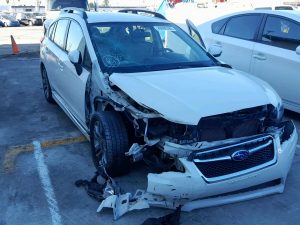
Start with labor. If you are mechanically inclined or a serious hobbyist you could save a lot of money by doing the repair work yourself. Or you might have a friend or trusted mechanic who could do this for you.
If you have solved the labor problem, there is still the parts. Cars from the past 20 or so years have replacement parts that can get pretty expensive. Authorized dealers can charge an arm and a leg for original parts. Local repair shops which source their parts from parts dealers charge almost as much. You are looking at potentially thousands of dollars for parts like body panels, engine, seats, and dashboards. You could try auction sites, junkyards or online parts stores. But, it still involves a lot of time and energy spent looking for parts.
Buy A Salvage Car For Parts
A parts car according to Andrew Collins at Jalopnik is a “spare car you have solely to harvest pieces from to keep another car alive.” If you are looking at a hefty bill for parts, you might be better off buying the same model car that has sustained damage but was able to keep the components you need intact. You can find a salvage title car at auction and use it as a “parts car” to repair your car. If you play it right, you can even make some money back.
What Is A Salvage Title Car?
A salvage title car is one which has sustained enough damage that the insurance company will write it off. The insurer looks at the cost of repair of the car, truck or motorcycle, and if it is close enough to the actual value of the car, they will simply pay the value of the car to its customer. It will then title the car as “salvage” which, to quote the State of Michigan “cannot be plated or used on public roads until it is re-certified by a specially trained police officer and retitled.” Within the salvage category, there are two broad subcategories: wrecked cars, that are titled as “salvage”, but can be rebuilt or fixed and are considered to be “repairable”, and cars that will never return to the road and are marked “for parts” or “non-repairable”.
The condition itself will vary from car to car. The most common occurrences are collision, flood, theft, and hail damage. Wrecked cars can run the gamut from bent frame to scratches. Flooded cars are extremely problematic since water damage can extend to every single component — and not be apparent upon close inspection. Stolen cars run from completely stripped to largely intact, while hail damage can be mostly cosmetic, and have minor to no interior damage.
Where Can I Find Auctions To Buy A Parts Car?
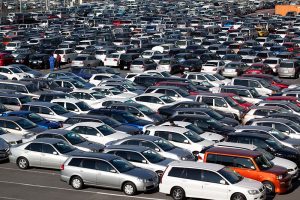
Where do you buy these cars? First, you need to check with your DMW if you can purchase a “parts-only” car. Some states, like Virginia, forbid the sale of a non-repairable car unless you are licensed. You will find them at online auctions. In some instances, like with the large auction site Copart, you have to be a dealer to participate in many auctions. But broker sites, like salvageresellers.com, allow you to bid on and purchase these vehicles. You can arrange inspections if the vehicle is far away and get estimates for transportation.
A Parts Car Doesn’t Have To Be Perfect!
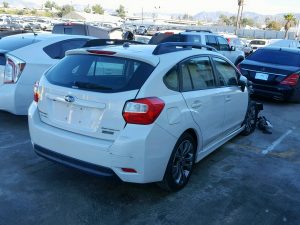
Remember you are not here to buy a car to run. You want to buy the same car model as the one you are fixing for the specific parts you need. If you were trying to buy a salvage car to get it on the road, it would require you to look carefully at whether there are enough undamaged major components that are worth fixing. But as a parts car or donor vehicle, you are looking for specific parts from specific components to remove. If you are looking for an engine or transmission, you could care less if the car has substantial side or rear damage or even if the frame is non-repairable. A car with a blown engine or transmission can be a great source of seats, dashboard, body molding, and quarter panels. With that being said, you can look at both non-repairable and repairable salvage cars, and if the price is right, why limit yourself to a parts-only car?
Your Parts Car Arrives From Auction
So the car arrives – usually towed to your home or shop (or wherever you want). You now have the car around as a permanent donor car. Think of it as a stash of parts for any eventuality. After all, the average car is composed of over 13,000 parts. Things go wrong and other things simply break. You can also try to get some money back by selling good parts on online auction sites. There are easy-to-remove parts, like turn signal switches, that can go for over $50.00 dollars on auction sites. Buyers are willing to pay fairly high prices for certain body parts and trim since the manufacturer and dealers charge very high rates for replacements. You can even find buyers for blown engines if you are lucky. At any stage, you always have the option of walking away from the car by calling your local auto recycler/junkyard, who will take your car away and leave you with a little cash.
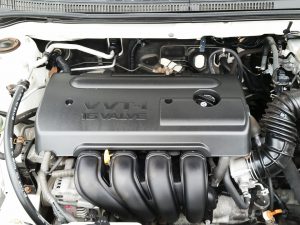
In the end, buying a salvage title car for parts can be an all-around win. You get to repair your personal car, get a source for future issues, and maybe make a few bucks back. Remember to check out auction sites where you can find salvage cars for sale.

